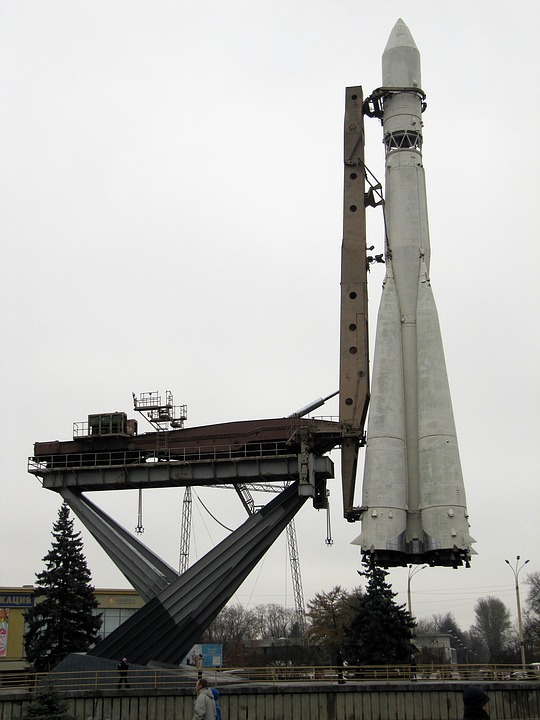Table of Contents=> Go Directly
What is rocket
</font color=”red”>

The word “rocket” can mean different things. Most people think of a tall, thin, round vehicle. They think of a rocket that launches into space. “Rocket” can mean a type of engine. The word also can mean a vehicle that uses that engine.
How Does a Rocket Engine Work?</font color=”red”>

Like most engines, rockets burn fuel. Most rocket engines turn the fuel into hot gas. The engine pushes the gas out its back. The gas makes the rocket move forward.
A rocket is different from a jet engine. A jet engine needs air to work. A rocket engine doesn’t need air. It carries with it everything it needs. A rocket engine works in space, where there is no air.
There are two main types of rocket engines. Some rockets use liquid fuel. The main engines on the space shuttle orbiter use liquid fuel. The Russian Soyuz uses liquid fuels. Other rockets use solid fuels. On the side of the space shuttle are two white solid rocket boosters. They use solid fuels. Fireworks and model rockets also fly using solid fuels.
World’s Smallest Rocket launched by japan
</font color=”red”>
The Japan Aerospace Exploration Agency (JAXA) on February 3, 2018 launched the world’s smallest rocket with the ability to put a tiny satellite into orbit. The rocket lifted off from the Uchinoura Space Center in Kagoshima prefecture, south-western Japan.
It carried a microsatellite TRICOM-1R, a three-unit CubeSat weighing about 3 kilograms. The satellite was developed by the University of Tokyo to capture images of the Earth’s surface. This satellite launch was a re-flight of the TRICOM-1 mission, which was lost in SS-520’s failure in 2017.
The launch was aimed at testing the ability of JAXA to launch low-cost rockets that can put micro satellites into space at affordable rates.
SS-520 Series Rocket
</font color=”red”>
• The rocket, measuring 10 meters in length, 50 centimetres in diameter and some 2.6 tons in weight, was the smallest satellite-carrying rocket in the world.
• It is No 5 vehicle of the SS-520 series and improved version of JAXA’s SS—520.
• It is a two-stage vehicle, consisting of an S-520 booster and a smaller second stage.
• It was the SS-520’s fourth flight. It first flew on February 5, 1998, before carrying out an ionospheric research mission from Ny-Alesund, Svalbard in December 2000.
• SS-520 series is based upon the S-520, which has made thirty launches since it was introduced in 1980, the most recent in 2015.
< Give Your Feedback via Comment >
